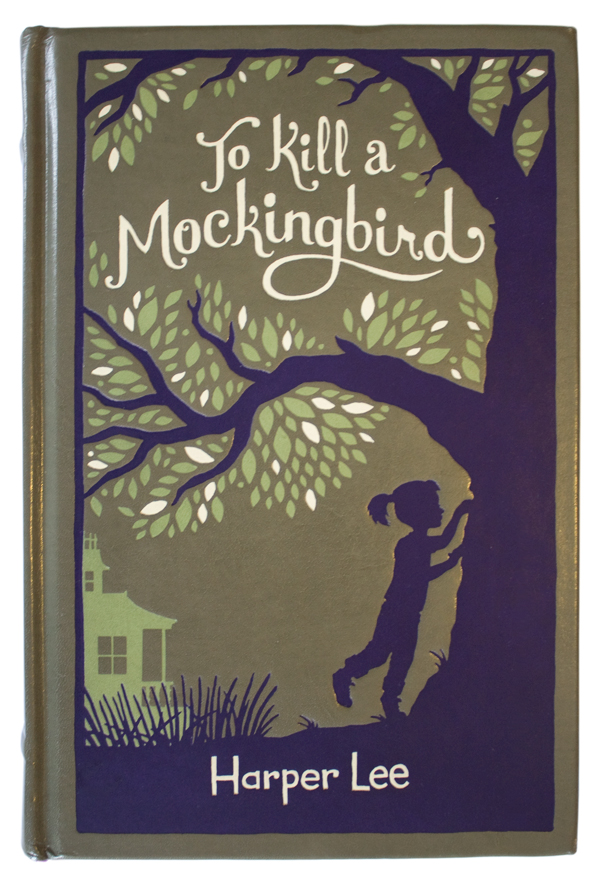Our book choice for August 2014 is To Kill a Mockingbird by Harper Lee. The unforgettable novel of a childhood in a sleepy Southern town and the crisis of conscience that rocked it, To Kill A Mockingbird became both an instant bestseller and a critical success when it was first published in 1960.
To Kill a Mockingbird is a novel by Harper Lee published in 1960. The story is set in the fictional town of Maycomb, Alabama, during the Great Depression. The novel tells the coming-of-age story of Jean Louise “Scout” Finch, as she witnesses the trial of Tom Robinson, a black man falsely accused of raping a white woman.
The novel is narrated by Scout, who is six years old at the beginning of the story. She lives with her older brother, Jeremy Atticus “Jem”, and their widowed father, Atticus Finch. Atticus is a lawyer who is known for his integrity and his willingness to defend the downtrodden. When Tom Robinson is accused of raping Mayella Ewell, a white woman, Atticus agrees to defend him, despite the fact that he knows that the case will be difficult.
The trial of Tom Robinson is a major turning point in Scout’s life. She witnesses the racism and prejudice that Tom faces, and she begins to understand the importance of standing up for what is right, even when it is difficult. The trial also has a profound impact on Jem, who is forced to confront the ugliness of racism for the first time.
Despite Atticus’s best efforts, Tom Robinson is found guilty and sentenced to death. He is later shot and killed while trying to escape from prison. Tom’s death is a devastating blow to Scout and Jem, but it also teaches them the importance of courage and compassion.
To Kill a Mockingbird is a classic coming-of-age story that explores the themes of racism, prejudice, and the importance of standing up for what is right. The novel has been praised for its insightful portrayal of the South during the Great Depression, as well as its sensitive treatment of the topic of race. To Kill a Mockingbird is a powerful and moving novel that has had a lasting impact on American culture.
In addition to the main plot of the novel, there are several subplots that explore other themes, such as the importance of family, the power of friendship, and the challenges of growing up. One subplot involves Scout and Jem’s friendship with Dill Harris, a boy who comes to live with his aunt in Maycomb every summer. Dill is fascinated by the Radleys, a mysterious family who lives next door to the Finches. The Radleys are never seen, and they are rumored to be dangerous. Scout, Jem, and Dill spend much of their time trying to figure out what is going on with the Radleys.
Another subplot involves Calpurnia, the Finches’ black cook. Calpurnia is a kind and generous woman, but she is also strict and demanding. She teaches Scout and Jem about black culture and history, and she helps them to understand the importance of respecting all people, regardless of their race.
To Kill a Mockingbird is a rich and complex novel that explores a wide range of themes. It is a powerful and moving story that has had a lasting impact on American culture.
Here are some additional details about the novel:
- The novel was inspired by Lee’s own childhood experiences in Maycomb, Alabama.
- The novel won the Pulitzer Prize for Fiction in 1961.
- The novel was adapted into an Academy Award-winning film in 1962.
- The novel has been translated into over 40 languages.
- The novel is considered to be one of the greatest American novels of all time.
Discussion Questions for To Kill a Mockingbird
- Overall impression, did you like it? If you hadn’t read it before did you have preconceptions about it and were they right or wrong?
- Would you say it is an adult novel or more young adult?
- What do you make of Boo Radley and his part in the novel especially his final act as protector? Is he a good guy/bad guy/sociopath/angel?
- What did you think of the portrayal of women in the story?
- Do you think the point of view of Scout is well written considering she is meant to be 6 years old at the beginning of the book but it is written as an adult?
- Why do you think it has become such a classic?
- Do you think Atticus is realistic as a character? Did you always understand the “lessons” he gave the children?
- What is the more prominent storyline for you, the children’s story (Boo Radley, changing relationships between the kids, the pageant, Atticus’ influence) or the adults (the house fire, the trial, racial tension) and did you think they tied together well?
- What do you think is is the significance of the school teachers new method?
- What do you make of Mrs Dubose kicking her morphine habit to die clean?
- Did you think it had a satisfying conclusion? What did you make of Scout saying she never saw Boo Radley again?
- What did you make of the quote which preceded the book: “Lawyers, I suppose, were children once.”
Individual Ratings
DKB's Rating 




Sue's Rating 




EmmaT's Rating 




Miranda's Rating 





